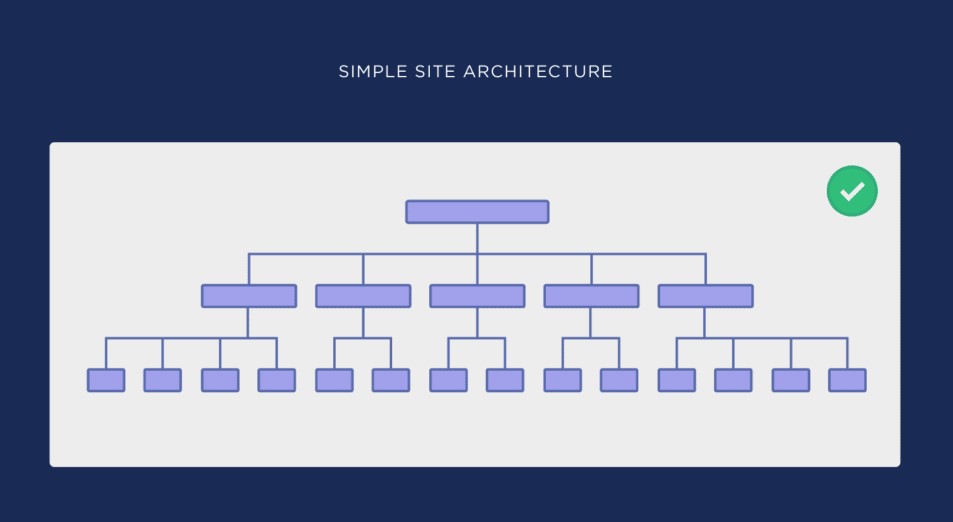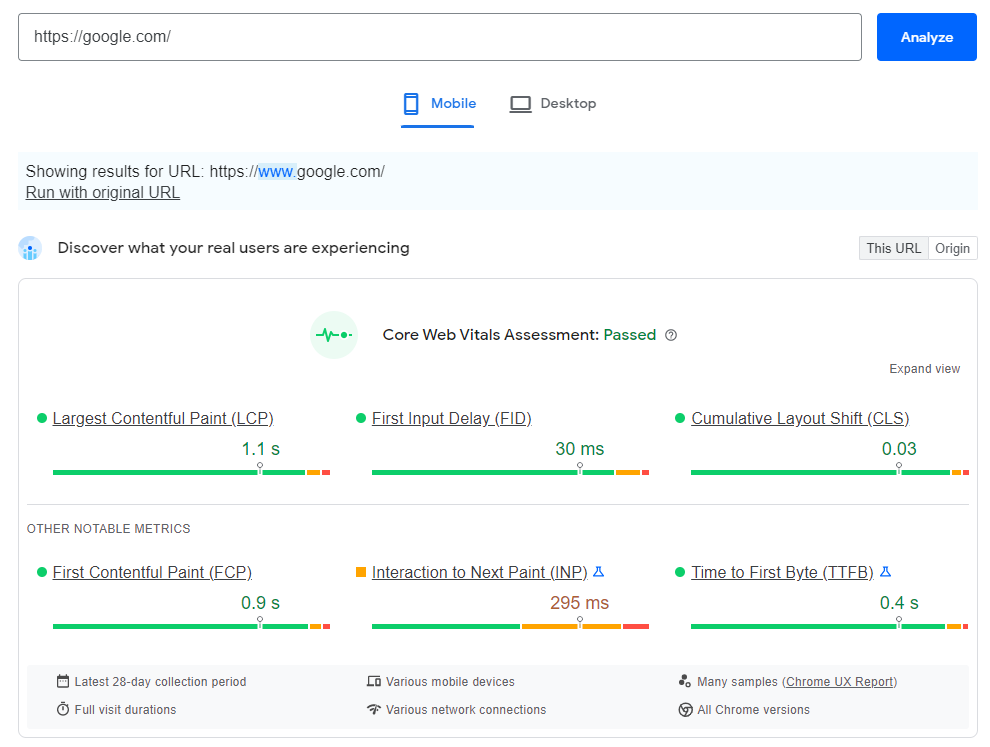Measuring SEO metrics is critical for demonstrating the worth of your work and optimizations. Every marketer needs to monitor the SEO metrics of their site to understand where to move on. In this post, you will learn more about the most significant SEO metrics to track and how to improve them.
Content:
Why SEO metrics matter for your site
The ability to track and analyze your project’s success is a major advantage of digital marketing. Suppose you want to be sure that your SEO efforts are worthwhile before dedicating the resources necessary to develop a strategy. In that case, you can use free tools like Google Analytics to get a complete picture of your website’s performance.
When you track the right metrics, you can accurately assess your performance, boost your search engine rankings, and return on investment.
Many website owners, in fact, suffer not from insufficient information but an abundance of it. The difficulty comes from determining which SEO tracking metrics are most important. The sheer volume of Google Analytics reports makes it nearly hard to make sense of them all without some outside help.
You need to keep an eye on the right indicators to refine your approach and advance in your field. To help you focus on the right metrics, we’ve listed the high-priority SEO metrics you should track and tips on improving them.
SEO metric to track #1 Domain rating
Domain authority, often known as DR, is an SEO concept used to evaluate a website’s or campaign’s efficacy. It indicates the relative importance of a website’s backlink profile compared to all other sites in their index.
The quality of a domain’s backlinks profile is essential for every marketer, as this SEO metric often correlates with your site’s popularity and traffic.
You can check the authority of a domain using tools such as Ahrefs, SERanking, Serpstat, etc. For example, to check the DR with Ahrefs, go to the Site Explorer and enter the domain name you want to chek.

DR is relative because it depends not only on how many high-quality sites link to you but also on how many other sites those quality sites link to.
Remember that increasing your website’s domain authority is a long-term goal as you set out to achieve it. But how do you increase your DR?
The first option is obtaining high-quality backlinks from established sources. There are two important parameters here:
- number of backlinks,
- quality of these links.
Increasing the quality of your link profile can be done in various ways. You can monitor competitors, analyze sites that bring you a lot of traffic, search for quality resources on specialized marketplaces, etc. The main thing here is a comprehensive analysis of the site from which you want to get a link.
Another good way to boost your domain authority is to create high-quality, shareable content. For what reason should your content be superb? If your readers find your content helpful, they’ll be more likely to forward it along. This way, you improve your chances of gaining inbound connections from highly trusted sources like universities and government agencies. Most government and educational websites provide links to external resources useful to residents or students. As a result, creating highly relevant, tailored-made content is a terrific method of gaining links. If you want to target universities, you could write a guide for graduates on beginning a career in your field.
Thanks to inbound connections from other websites, the authority of your root domains will also increase. In the end, this will all help you get a good DR.
Inbound links are crucial to your domain authority and search engine rankings; harmful links can actually have the opposite effect. Domain authority can be damaged if you use links from low-quality websites. To stop this from happening, it is crucial to conduct a link audit and promptly remove any potentially harmful links you find.
Search engine optimization tools can examine your website’s complete link profile and alert you to potentially damaging links. Semrush can help you analyze your backlink profile. A separate tab in the tool contains link-building solutions. You can do a backlink audit to identify any bad links impacting your SEO strategy negatively.
Semrush has a fantastic feature that allows you to export a list of spammy links for the disavow tool in Google webmaster tools. It makes your work easier.

Keep in mind that your site’s structure and user experience also count when determining your domain authority.
With the proper framework, search engines will have no trouble indexing your website’s pages. Always use category pages to help organize your site’s architecture in the long run. Do you want to start a new page? It should be added to an existing category. Do you want to create a slew of new pages? Form a new category. And from that new category page, link to the new pages.
Your URL structure should correspond to your categories. Here’s an example of a URL structure that many websites employ: https://example.com/category/subcategory/keyword-keyword
Finally, your site architecture is influenced by how your pages are linked together. That is why you should include links to your category pages in your navigation menu.

SEO metric to track #2 Referring domains
When it comes to search engine rankings, backlinks are a major factor. In addition, the number of referring domains strongly correlates with search engine ranks, according to a recent analysis of over 11 million Google search results.
All the sites that connect to yours from the outside are counted as backlinks, while the individual domains that link to you are counted as referring domains.
You can monitor backlinks with the help of SEO analytics and a dedicated application. A good backlink tracking tool should include the following three features:
- Frequency. Updates are important, as the tool has to be able to index newly published backlinks. Backlinks will only be visible for weeks if the program updates its index frequently enough.
- Exactness. The tool should display only live backlinks with separate indicators for dofollow and nofollow links. Another great feature is monitoring the authority of the linking page and the anchor text used in the links.
- Monitoring. The tool should show you the overall trend, including whether or not your backlink count has decreased or increased.
If you want a significant boost in organic traffic, the number of new referring domains should also increase. Keep an eye on this indicator to ensure your link-building is helping your search engine optimization efforts.
Here are some tried-and-true methods for attracting backlinks and improving your SEO:
- Try guest posting services. Strategically incorporating links to your own resources and guest blogging can help your company increase its backlink profile organically. Find blogs that cover topics related to your business. You can search for relevant blogs manually with the help of multifunctional services or Google. If you don’t have time to search for sites manually, you can try a guest posting service like Collaborator, where you can find thousands of websites that accept guest posts and post your article in just a few days.
- Engage influencers. Try to get a review of your product or service from a blog that caters to a certain audience or an influential member of your business. If you’ve identified the appropriate blog audience or influencer to back your company, you may offer them a bonus in exchange for an honest review.
- Create engaging visual content. Why is visual content so important to marketers? Because it is easy to understand and spread. It’s a simple approach to boost the likelihood of your material being shared, whether you’re making an infographic or another form of visual.
SEO metric to track #3 Keyword rankings
Keyword ranking in SEO refers to your page’s position in search results for specific search terms.
When a user enters search phrases related to the subject matter of your page into Google, the position in which your URL appears is determined by your keyword ranking. Such services as Ahrefs show the number and position of ranking keywords. It is important that this number grows, and you monitor these keywords’ positions. If some keywords are shown on the 30-100 positions, you can work on their ranking by optimizing content and building quality links.
You can enhance your rating for specific keywords through various methods:
- Determine your current ranks. You can’t tell if you’ve improved until you have some baseline data. Keep track of the rankings for your top keywords to see when your efforts have improved them.
- Research popular search terms. Look for keywords that people are using to locate you, as well as terms that are currently on your website. Perhaps you can improve your results simply by improving the existing keywords in your material.
- Ensure that your titles and title tags are optimized. Make sure it’s optimized for both search engines and readers. You want them to communicate effectively with search engines, but you also want them to be appealing to humans.
If your content meets all the requirements for meaning and optimization, you can build links to keywords that will increase their position.
SEO metric to track #4 Organic traffic
Organic traffic refers to users who arrive at your website after searching on a search engine. Organic traffic takes time to deliver results for SEO, but it is the best type of traffic for your website.
Users are more likely to trust websites that rank organically: therefore, organic traffic can boost your trustworthiness. Is organic traffic valuable? Indeed, it is. Your site’s performance and continued existence depend on a continuous traffic flow. Therefore, you should discover how to enhance website visitors.
First of all, you can find and remove non-performing content. This is content that does not meet its original function and might cause serious congestion and compromise your rating in the SERPs. This is because search engines encounter a glitch during the crawling process and abandon your website before reaching vital pages. To locate underperforming content, use Behavior reports in Google Analytics. These reports specifically inform you of the pages visitors view and their actions while there.
If you want to understand how to attract visitors to your website, writing high-quality content is only half the battle. You can significantly improve organic traffic if you focus on long-tail terms in your keyword research. Long-tail keywords are three or four words in length, such as “top WordPress security plugins” or “best hotels to stay in LA.” Long-tail keywords are often low-competitive, which means that it is more realistic to reach the top of search engines with these keywords, especially when your competitors are giant aggregators or marketplaces.
SEO metric to track #5 Page speed
Another important metric for Google that it pays the most attention to is the site’s usability. And page load speed is a crucial part of it. According to the study, 47% of users expect the website’s loading speed to be at most 2 seconds. Therefore, it is logical to assume that the conversion rate will be higher if your site loads quickly and vice versa.
So how do you estimate the exact loading speed? To do this, you can use the tool from Google PageSpeed Insights.

Now let’s understand what affects the speed of page loading, what to pay attention to, and how to fix it. These factors can be many, but we have chosen the most frequent:
- Hosting. The hosting provider plays a key role in the page load speed. As a rule, a lower price for services equals poor site performance. Pay attention to this.
- Images. A common mistake is to use large images on the site. Although such images are of better quality, they degrade the site’s speed. To optimize images, you can use special free tools that compress images.
- Redirects. Many redirects on the site also affect its speed because it increases the HTTP request and response process. Therefore, eliminating unnecessary redirects on the site can greatly increase download speeds.
- Caching. Saving copies of pages (caching) minimizes the server’s work to create and serve the page in the site visitor’s browser. This can be done at the server level or, for example, using free plugins if your site is on WordPress.
Conclusion
As SEO has become more complicated, determining success has become more complex too. Individual indicators are no longer sufficient to tell the tale of your SEO efforts. Instead, you must monitor various metrics ranging from backlinks and rankings to engagement and conversions.









